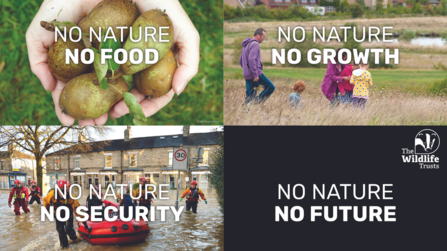Cornwall’s stunning landscapes and magnificent seas can mask the hard truth that nature in Cornwall is in crisis. Evidence from Cornwall Wildlife Trust’s 2020 State of Nature in Cornwall report suggests that 21 breeding birds and eight bumble species have become locally extinct in the last 40 years alone, while pollution, development and climate change continue to threaten some of our most important habitats. In short, we face intertwined wildlife and climate crises.
Yet at a time where more must be done to bring nature back if we’re to avert catastrophe, we believe the UK Government has launched a full-scale attack on nature – leaving wildlife unprotected by tearing up some of the most fundamental laws we’ve got.
In partnership with other environmental and nature conversation organisations across the UK, Cornwall Wildlife Trust is speaking out to defend nature against these attacks, urging the Government to rethink current proposals.
Over three planned blogs, my colleagues and I will explore the key threats facing Cornwall’s already-vulnerable wildlife as a result of this attack on nature, and the disastrous effects they could have for already-vulnerable wildlife in Cornwall.
The removal of important laws that protect nature, help provide clean water, and reduce pollution (through the Retained EU Law)
The Retained EU Law Bill is having its second reading in the House of Commons today, Tuesday 25th October. It puts at risk hundreds of laws that protect our nature and wildlife, as well as regulations to safeguard public health, working conditions, and create a sustainable economy.
The UK has set ambitious targets for nature’s recovery, from its aim to protect 30% of land and sea for nature by 2030 to its legally binding commitment to halt the decline in species abundance by 2030. Passing the Retained EU Law Bill will make reaching these challenging targets virtually impossible.
What is the Retained EU Law Bill?!
The Retained EU Law Bill is the UK Government’s plan to reform and revoke current legislation that has its origins in policies from the European Union, much of which exists to uphold standards for water quality, pollution, the use of pesticides, and other matters relating to nature.
As things stand, there is no indication of which laws will be lost and which will be assimilated into domestic legislation, with or without changes. At Cornwall Wildlife Trust, we are deeply concerned that revoking these laws without suitable alternatives in place to provide robust protection for nature could have disastrous impacts on Cornwall’s wildlife and wild places.
Why are we worried?
There are 25 sites wholly or partly within Cornwall with European nature conservation designations due to the uniqueness and / or importance of the habitats and wildlife species found at them. For years, these designations have played a vital role in protecting nature in Cornwall. For example, the new section of A30 (built in 2007) around Goss Moor was deliberately sited to the north of Breney Common and Goss & Tregoss Moors Special Area of Conservation (SAC) to avoid those most sensitive areas of habitat.
This protection covers areas of land, sea and coast, and includes some of Cornwall’s most cherished areas, such as Lands End, the Lizard, the mid-Cornwall Moors, St Austell coast, Penhale Dunes, the Fal and Helford Estuaries, the River Camel and its tributaries, and the River Tamar Estuary.





